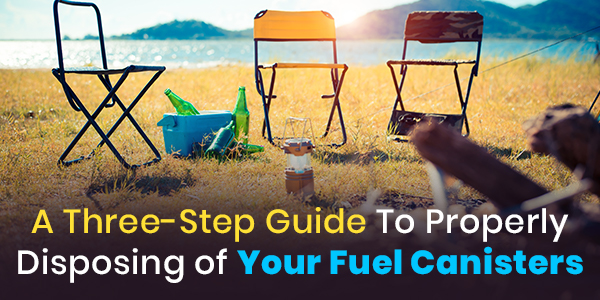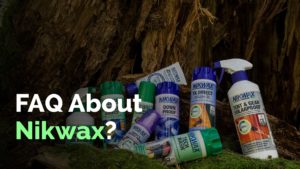

Amy
- Categories: General
You’re in the wilderness on a camping trip, and night has fallen. It’s starting to get cold. Luckily, you have fuel canisters with you. These small and lightweight canisters are amazing — simply unpack the propane cylinders, and you have fuel to attach a stove, get much-needed heat, and even cook up a meal.
However, once you’re done with the fuel canisters comes the question of disposal. Littering is never an option, and it’s important to dispose of these correctly to prevent them from becoming a hazard. After all, they’re very flammable, and a single spark could unleash an explosion. As such, many places actually have a propane cylinders dealer who collects these used cylinders and helps you to dispose of them correctly. Most recycling plants also have similar services.
That said, if you’re backpacking or want to save money instead of paying someone to collect the hazardous waste for you, it’s perfectly fine to dispose of them by yourself if you know-how. If you’re wondering how you’re in the right place. Here’s a comprehensive step-by-step guide to disposing of your fuel canisters in the right way.
1. Remove all the gas
This may almost seem like a no-brainer, but you’d be surprised at how many people forget this crucial step when disposing of the fuel canisters. For safety reasons, it’s important to ensure that no flammable gas is left in the canister before you proceed with the next few steps. It also protects those who will eventually receive, treat, and recycle the canister.
So how should you remove the gas in the canister? Well, the first step is to find a safe space. It’s ideal to stay away from open flames or anything that could potentially ignite the gas. If you’re in an enclosed room, make sure the room is well ventilated. If you have a stove, simply attach it to the canister and let it burn off any remaining gas. Ideally, you should leave it to low heat to avoid any accidental burn injuries for leaving the stove on. Apart from a stove, you can also use any other critical appliance to burn the remaining gas.
Even after burning what’s left, there’s a chance that there’s still leftover gas inside. In this case, what you can do is to try inverting the canister and the stove, then opening the valve. This process releases the gas quickly and immediately, so before you do this, do check for safety again! You should look out for any potential ignition sources and open flames. The room should have good ventilation, too.
Once the valve is open, you can just leave it for a while. Note that even after the hissing stops, there might still be residual gas inside, so don’t proceed immediately. Though waiting a little longer may take up more time, this additional step allows the residual vapor you can’t detect to escape completely, keeping you safe even as you start on the next few steps.
2. Puncture the can
Once you’re fairly certain that there’s no more gas left, it’s time to puncture it. Now, this is a recycling requirement in all states, so be sure to make the puncture large and as eye-catching as possible. This lets other people know it is empty, damaged, and safe to handle. For clarity, you may even want to try labeling it with a marker to make it clear that the canister is empty and safe for recycling.
To puncture the canister, most conventional tools are perfectly fine. Whether it’s a screwdriver, ice ax, scissors, or hammer and nails, it should be pretty safe as long as there’s no gas inside. A popular tool known as the JetBoil CrunchIt is also widely available and can help to release the last bit of fuel as well as puncture the can.
If you’re still unsure if the can is empty or want to prevent sparks from forming, you can simply place a rag over the can before you start with the puncturing process. The rug reduces contact between metals and reduces friction, making sure that no sparks ignite any leftover gas. Once you’ve pierced the can, you can safely put it in a bag to carry for the rest of your backpacking trip, or to take to a recycling center.
3. Find an appropriate recycling program
Note that not all recycling centers will accept your empty fuel canisters, even if they’ve been properly drained of gas and punctured! This is because it still counts as a hazardous item, and moreover, also counts as mixed metals.
Because it’s mixed metals, the canisters won’t be accepted at most curbside recycling containers. Instead, some recycling programs have specific days that they come by to collect mixed metals or have drop-off programs where you can leave the empty fuel canisters at a designated drop-off point. It differs from place to place, so do check with your local authorities for the most accurate information.
On that note, do keep in mind that it’s much easier to recycle lightweight propane or butane cylinders over the heavier propane cylinders that are popular with large groups of campers. While the disposal process is largely the same, it’s more likely that your local recycling center will take in a lightweight metal cylinder or canister over the heavier and bulkier ones. As such, you may wish to opt to use smaller and lighter canisters for your next camping or trekking trip. Not only will they be easier to carry, but they’ll be easier to recycle as well!
These three simple steps are all you need to know on how to safely recycle the fuel canisters that you use, whether at home or in the great outdoors. Although it does take up a little more time than if you were to chuck it as it is, the entire process actually helps to keep you and the environment safe. After all, recycling is definitely the way to go in reducing landfill waste and helping to save the environment.
Share:
By submitting your email address, you are agreeing to receive marketing emails from theexpertcamper.co.uk.
We’ll never share your email address and you can unsubscribe at any time. Privacy policy
Related Posts

A Seasonal Guide To Hiking In The Peak District
Are you ready to lace up your hiking boots and explore the stunning landscapes of the Peak District? This seasonal guide will take you through

Hiking Challenges Preparing For Your First Ultrahike
Are you ready to take your hiking adventures to the next level? Ultra-hiking offers a unique combination of physical and mental challenges, breathtaking scenery, and

Ecofriendly Hiking Tips For Sustainable Adventures
Are you an outdoor enthusiast looking to minimise your impact on the environment while enjoying the great outdoors? Eco-friendly hiking is the perfect solution! We

The Best Hiking Trails For Experiencing UK Wildlife
When exploring the picturesque hiking trails of the UK, you can expect to encounter a diverse array of wildlife. From majestic birds soaring overhead to

Wildflower Walks The Best Trails For Nature Lovers
Are you a nature lover looking to embark on a wildflower walk? Explore the best trails for wildflower walks, including [Trail Name 1], [Trail Name
























